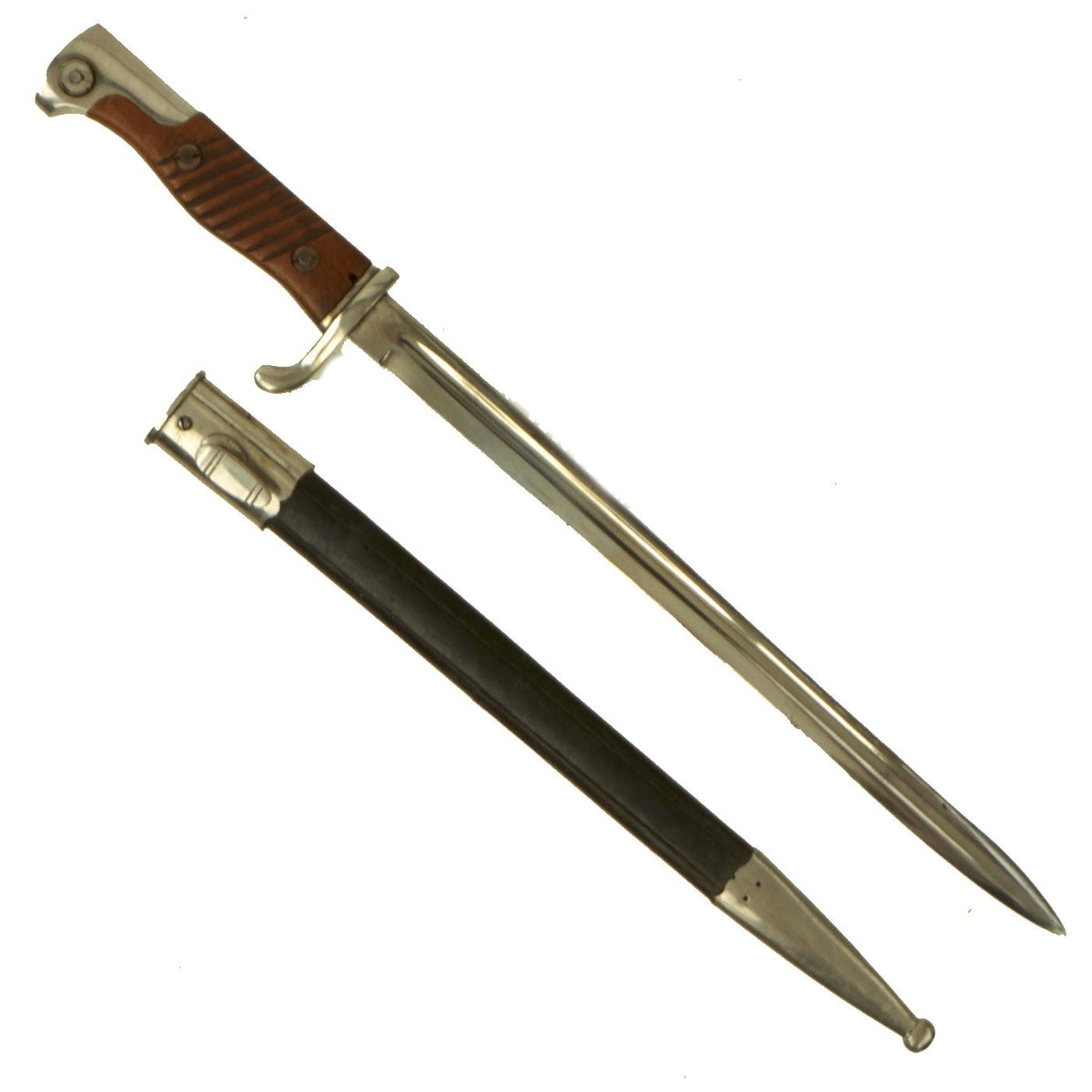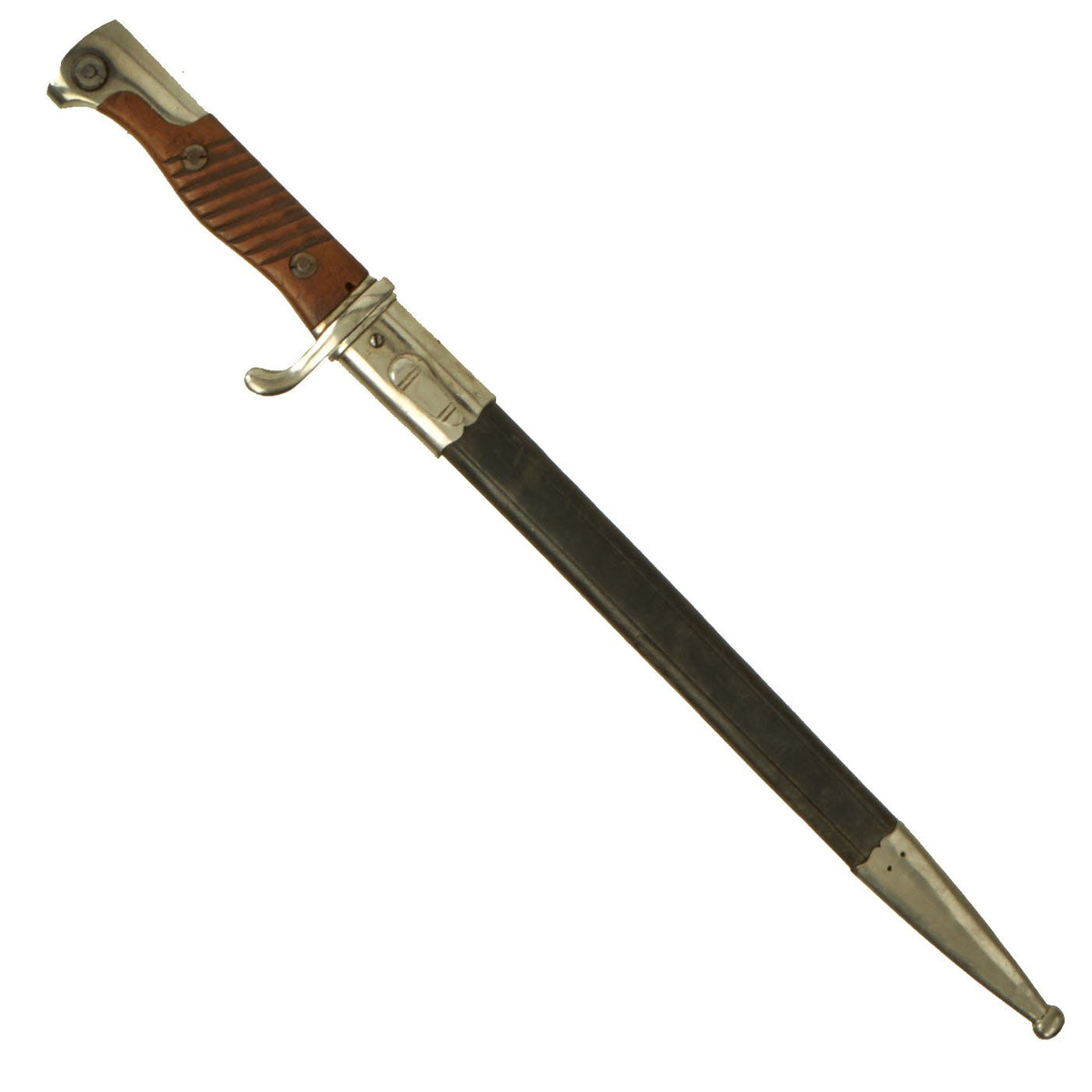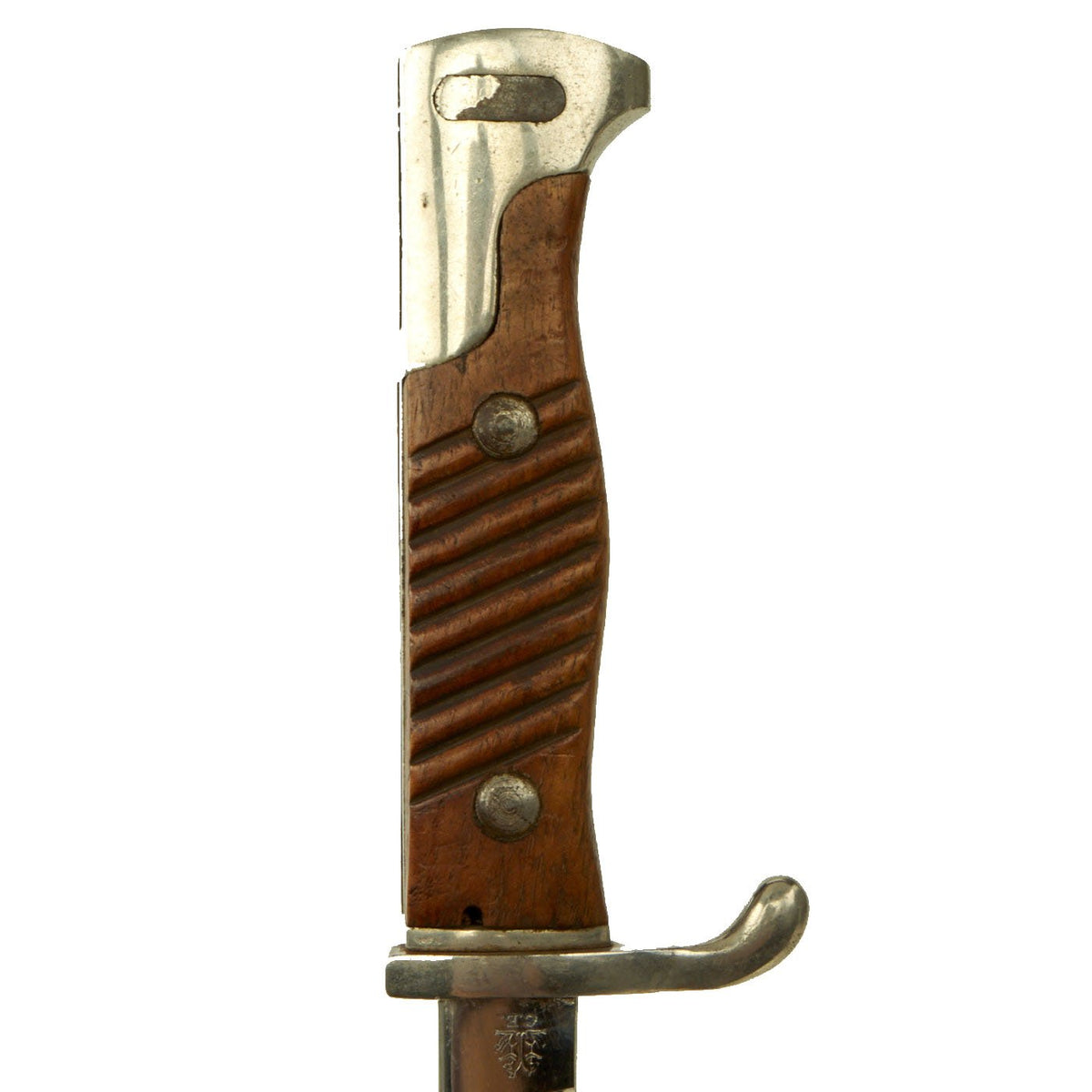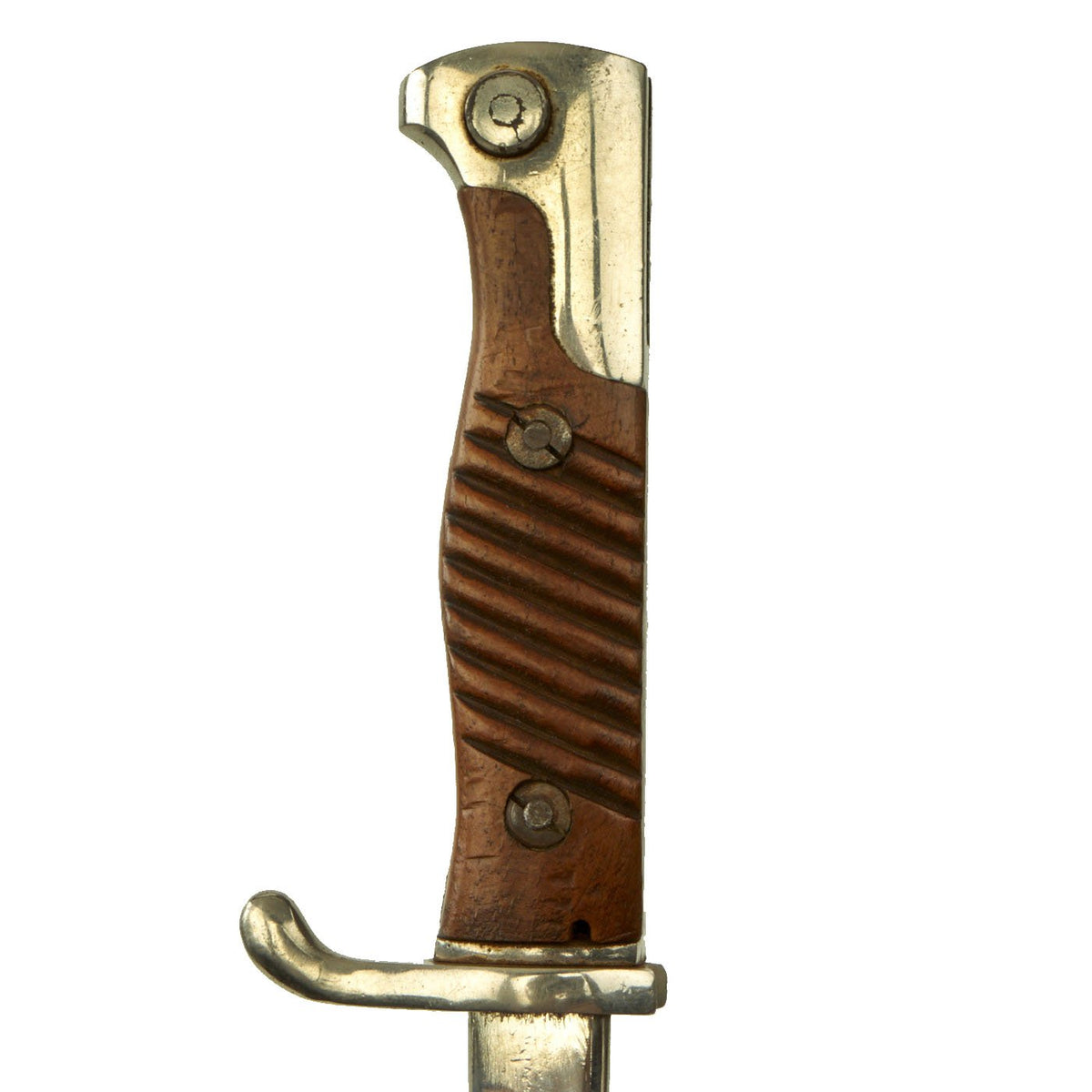Original German WWI Cut Down M1898 GEW 98 Nickel Plated Parade Bayonet by Carl Eickhorn with Scabbard Original Items
$ 225,00 $ 90,00
Original Item: Only One Available. In 1898 with the new Mauser bolt action infantry rifle the military adopted this long bayonet, the Seitengewehr (Sidearm) M1898. This longer bayonet gave an Infantryman the ability to bring a Cavalryman down from his horse, due to the bayonets long reach. Of course Cavalry was soon becoming a thing of the past and these long bayonets were being surpassed by different and shorter versions. At the start of WWI in 1914 this Gew 98 long bayonet was the norm.
This is a very nice Nickel Plated “Parade” or “Walking Out” example of the M1898, which has had the typical long “pipe backed” 20 3/4″ blade cut down to a more manageable 12 1/2″ length. It was reprofiled correctly, most likely done by a skilled knife maker. The bayonet has very fine nickel plated hilt mounts, though there is a bit of plating loss on the bayonet latch. Like most parade bayonets, it does not conform to the n/A or a/A pattern, with two grip scales, but without any flash guard on the spine.
The reverse ricasso is stamped with the Carl Eickhorn “Two Squirrel” trademark over C.E., for manufacture by the legendary firm of Carl Eickhorn, located in Solingen, the “City of Blades” in Western Germany. Per J. Anthony Carter’s book GERMAN KNIFE AND SWORD MAKERS, this specific version of the mark was used on swords, “walking out” bayonets, and other similar items after 1906. This is exactly the mark that should be on a WWI Blade.
This company was founded in 1865 by Carl Eickhorn, and is arguably the most famous of all Solingen makers. Not only could the family trace their history back 500 years, but they could also demonstrate involvement in the hardening and grinding industries for the same period. Truly the nobility of Solingen Edged weapon dynasties. Eickhorn edged weapons are the most desirable of all makers.
The grip plates are of wood, being the 2nd Style, and have grooves cut into them to afford a good grip and are retained by a rivet and spanner. Condition is very good, with no cracks or chips, just the some light wear from use. The blade is in great shape, with the nickel plate still retained well, with just a few areas of wear, and the reprofiled tip is missing the plating as well.
The scabbard is of fine faux leather that has been decorated with the usual pattern of twin lines. The upper and lower scabbard mounts are nickel-plated and have scalloped edges. The lower mount is retained by staples on both sides (one is missing), while the upper mount has but one.
A very interesting WWI Parade bayonet by Carl Eickhorn, most likely shortened and reissued for use during WWII. Ready to display!
Specifications:
Blade Length: 12 1/2″
Overall length: 17 5/8”
Crossguard: 2 3/8”
Scabbard Length: 13 1/4”
Fast Shipping with Professional Packaging
Thanks to our longstanding association with UPS FedEx DHL, and other major international carriers, we are able to provide a range of shipping options. Our warehouse staff is expertly trained and will wrap your products according to our exact and precise specifications. Prior to shipping, your goods will be thoroughly examined and securely secured. We ship to thousands clients each day across multiple countries. This shows how we're dedicated to be the largest retailer on the internet. Warehouses and distribution centres can be located throughout Europe as well as the USA.
Note: Orders with more than one item will be assigned a processing date depending on the item.
Before shipping before shipping, we'll conduct a thorough inspection of the items you have ordered. Today, the majority of orders will be delivered within 48 hours. The delivery time will be between 3-7 days.
Returns
The stock is dynamic and we cannot completely manage it because multiple stakeholders are involved, including our factory and warehouse. So the actual stock may alter at any time. It's possible that you may not receive your order once the order has been made.
Our policy is valid for a period of 30 days. If you don't receive the product within 30 days, we are not able to issue a refund or an exchange.
You can only return an item if it is unused and in the same state as the day you received it. You must have the item in its original packaging.
Related products
Uncategorized
Uncategorized
Uncategorized
Uncategorized
Armoured Fighting Vehicles of the World: AFVs of World War One (Hardcover Book) New Made Items
Uncategorized
Uncategorized
Uncategorized
Uncategorized
Uncategorized
Uncategorized
Uncategorized
Uncategorized
Angolan Rebel 1970s era 60mm Inert Display Mortar from Angolan Civil War Original Items
Uncategorized
Uncategorized
Band of Brothers ORIGINAL GERMAN WWII Le. F.H. 18 10.5cm ARTILLERY PIECE Original Items
Uncategorized
Uncategorized
Uncategorized
Uncategorized
Australian WWII Owen MK1 Machine Carbine SMG Custom Fabricated Replica with Sling Original Items












































































